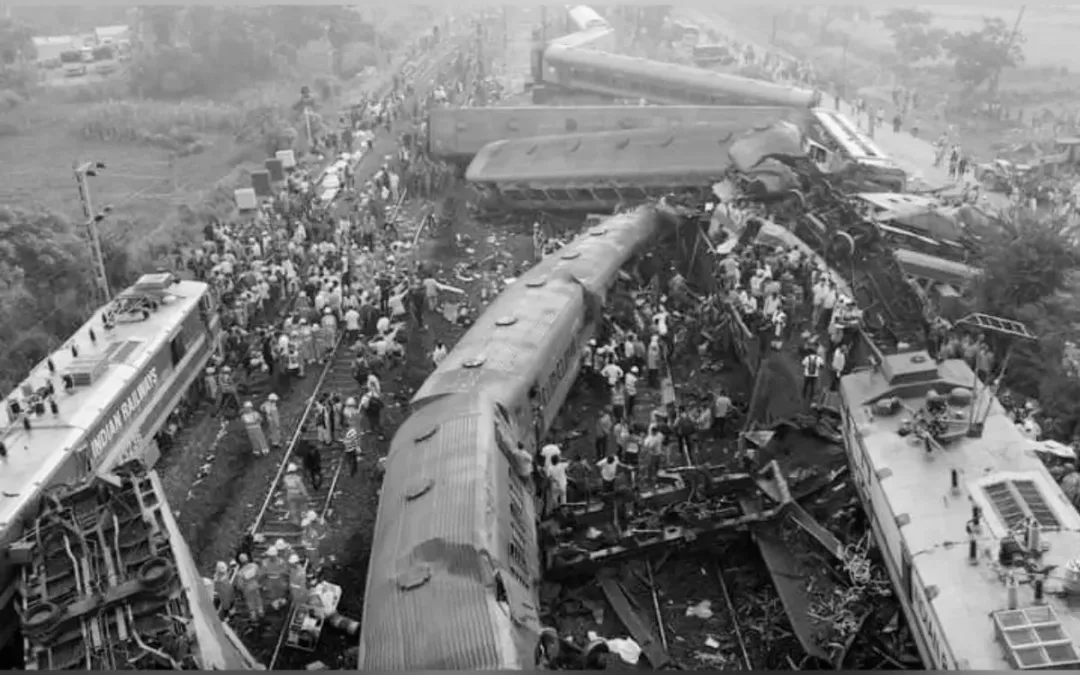Read in : தமிழ்
The horrific three-train pile-up involving the Coromandel Express that has led to hundreds of deaths and thousands injured has led experts to spotlight delays in railways implementing the accident prevention system called Kavach. The Parliamentary Standing Committee on Railways in the Lok Sabha was told that as of March 2022, only a trial section of 250 km and another 1,200 route km in South Central Railway had been brought under it.
The report of the PSC on Railways states that as per Government’s reply, Bidar-Parli Vaijnath -Parbhani and Manmad–Parbhani–Nanded–Secunderabad–Gadwal–Dhone-Guntakal sections in SCR were covered by Kavach, a contraction for Indian Railways Automatic Train Protection (ATP) System.
Responding to the Committee, the government further said, “works of Kavach for more than 34,000 route km on High Density Network (HDN)/Highly Utilised Network (HUN) routes have been approved on Indian Railways. At present Kavach roll out is planned on New Delhi – Mumbai and New Delhi – Howrah routes which are targeted for completion by March’ 2024.
Further roll out will be planned based on experience gained, it added. Indian Railways made provision of Rs. 272.30 crs in Financial Year 2022-23 for implementation of Kavach in comparison to Rs.133.00 crs in F.Y.2021-22.” The Thirteenth Report of the PSC was issued in December, 2022.
As of March 2022, only a trial section of 250 km and another 1,200 route km in South Central Railway had been brought under it
The data show the weak traction achieved by a high-profile train safety system in the wake of the triple train collision involving the Coromandel Express in Odisha that left at least 261 persons dead and hundreds badly injured as of Saturday afternoon.
Not well-funded
At a broader level, the Railways have been pursuing a Rashtriya Rail Sanraksha Kosh (RRSK) since 2017-18 with a corpus of Rs. one lakh crore over a period of five years (Rs. 20,000 cr each year) which includes, among other things, the following: critical safety-related works, rolling stock, level crossings, road over/under bridges, track renewal, bridge works, signal and telecommunication works, other electrical works, machinery and plant, workshops and training/HRD.
Also Read: Why TN eagerly awaits Egmore-Kanyakumari track doubling
The parliamentary panel noted that the Railways were unable to come up with sufficient resources for the programme to augment budgetary allocations. The government blamed the COVID-19 pandemic for a fall in resource mobilisation, and said it had allocated an additional Rs.10,000 crore during 2021-22 for safety programmes. “For the Financial Year 2022-23, a provision of Rs. 12,000 cr has been made for RRSK out of which Rs. 10,000 cr is from Gross Budgetary Support of the Government and Rs. 2,000 cr is from internal resources of Railways,” it added.
Pinning responsibility on the government for failing to pursue the Kavach system vigorously, the Trinamool Congress said it was first mooted by Mamata Banerjee as Railway Minister in 2011-12. TMC spokesperson Saket Gokhale said on Twitter, “While anti-collision systems don’t exist on 98% of Indian Railways routes, the Modi Govt is shockingly focused on starting more Vande Bharat high-speed trains, most of which are personally inaugurated by PM Modi.
New high speed trains being deployed on a railway network where 98% of it is without anti-collision technology. What could go wrong?”
Mamata Banerjee said on Saturday to the media at the accident site that the trains involved in the Balasore crash did not have the advanced collision avoidance system. Railway Minister Ashwini Vaishnav and another Union Minister, Dharmendra Pradhan were present with her.
According to railway systems literature, India developed an indigenous Train Collision Avoidance System (TCAS), which got different names in subsequent years, but did not receive the priority it needed to be rolled out across the route length in the country, extending just over 68,000 km.
The parliamentary panel noted that the Railways were unable to come up with sufficient resources for the programme to augment budgetary allocations
Moving block vs Absolute block
The use of radio frequency communications between trains and a control centre enables operation of trains in a “moving block”, that is, multiple trains with safe distances monitored by control systems and accurate position information on the trains. The alternative is the older fixed or absolute block system that allows fewer trains to be operated since one block must be cleared before another can enter it, and this is manually confirmed.
An Introductory Handbook on Communications Based Train Control (2021) published by the Railways says the absolute block technology is “the most widely used” on Indian Railways.
Also Read: How Train-18 fought crippling red-tape
The de-emphasising of the Railway Budget in the Modi government and integrating it with the main budget has lowered the focus on several aspects of railway operations, and public imagery focused mainly on the launch of new Vande Bharat trains, almost all of which have been flagged off by Prime Minister Narendra Modi. Trauma and intensive care inadequacy in most towns and rural areas across the country raises the death and disability rates during a train crash in India.
Mass movement of labour from eastern States such as Bengal to the south has put pressure on trains, and it is common to see the minority of unreserved coaches of all trains stuffed with desperate travellers. Coromandel Express is a favourite of them.
Read in : தமிழ்











